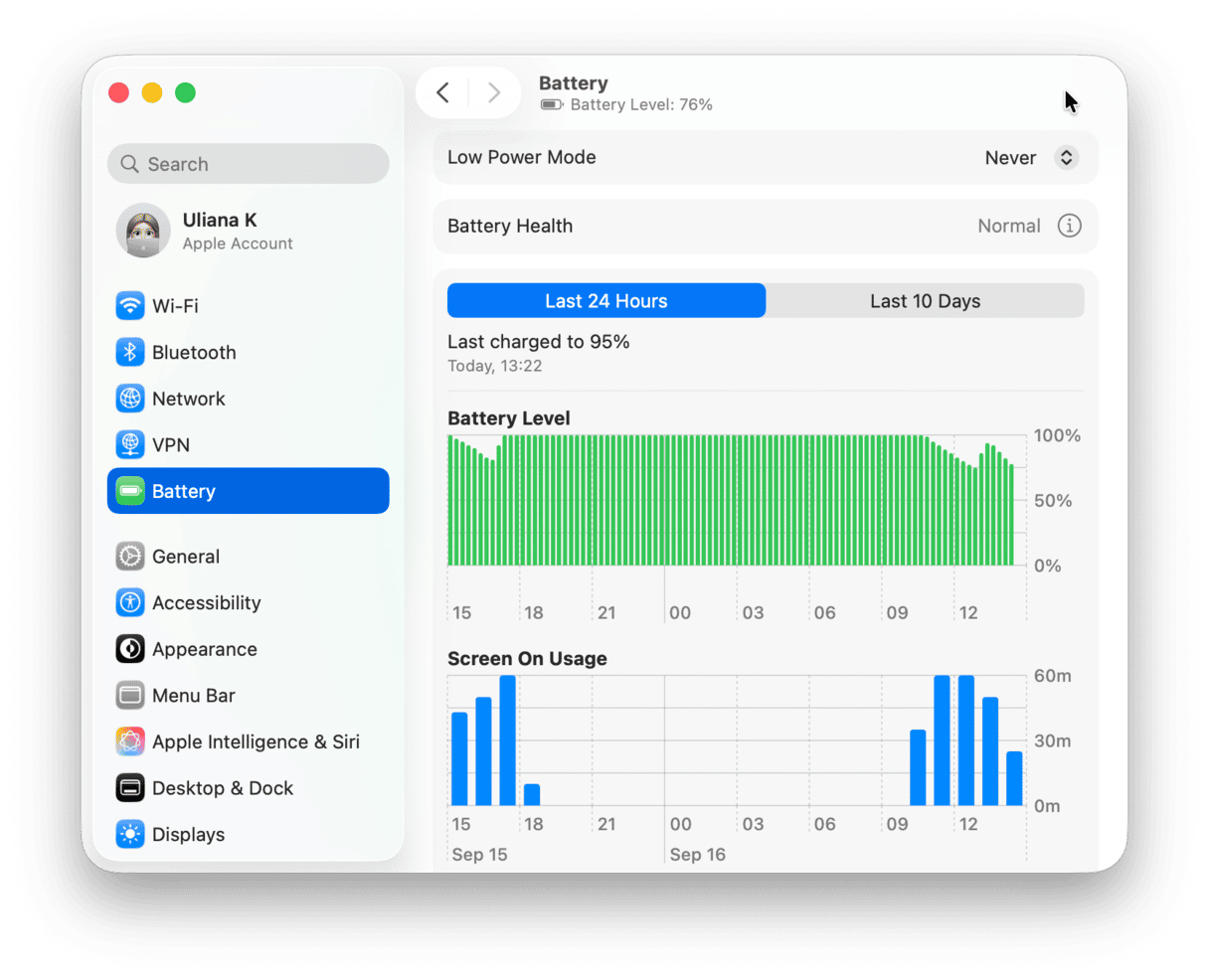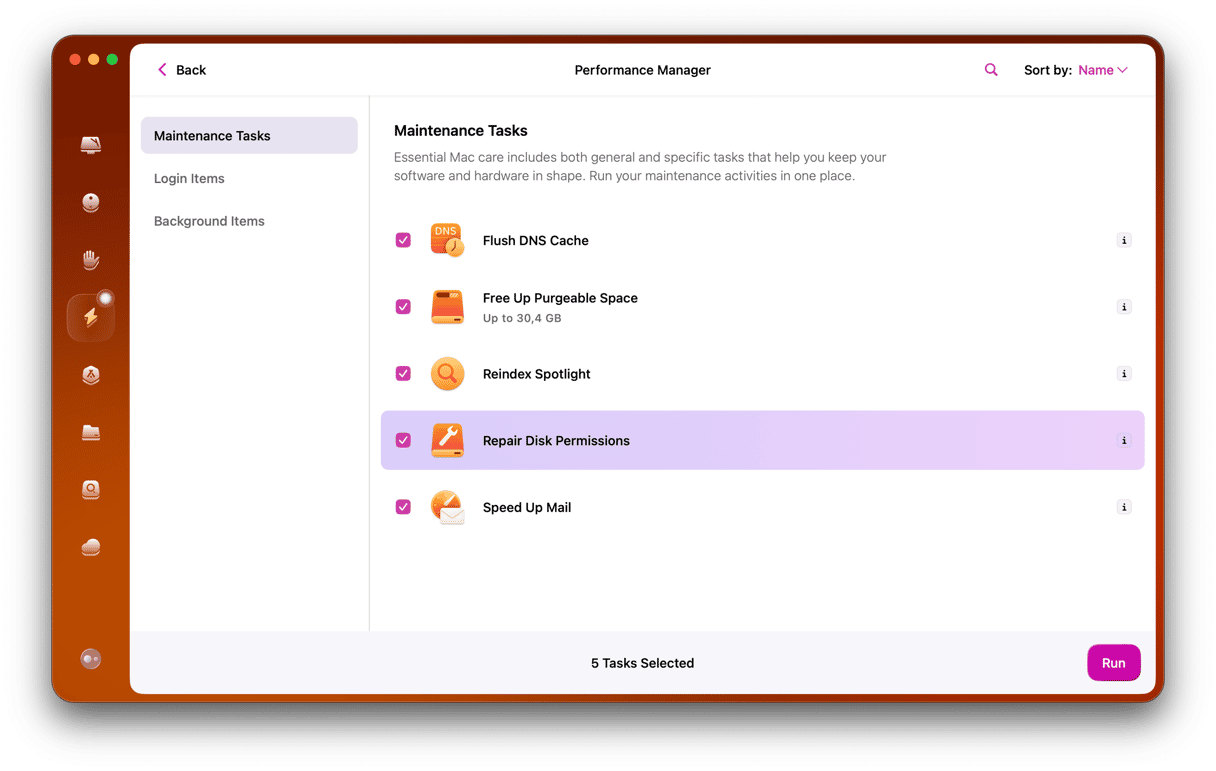One of the areas in which Apple Mac computers have improved significantly in recent years is battery life. It’s not just that batteries last longer between charges, but how the battery is managed in macOS extends its total lifespan. Knowing that, what a surprise it is to encounter an issue when MacBook shuts down when it’s unplugged. In this article, we’ll explain why your MacBook might turn off when it’s unplugged and what you can do about it.
Why does my MacBook only work when it’s plugged in?
There are two likely reasons why your MacBook might refuse to run on battery power:
- The battery is damaged or too old and can no longer supply enough power to run your MacBook.
- The system management controller (SMC) on your Mac is faulty and, consequently, unable to manage the battery power correctly.
A damaged or old battery is the most serious and the least likely to happen. Unless your Mac is ancient and you’ve been charging it every day for years, we doubt you’ve used up all of the battery’s charging cycles. And what’s more, modern laptop batteries rarely develop faults.
What to do if your Mac turns off when it’s unplugged
There are some questions to help you identify the problem. Let’s start with this one:
Is the battery charging?
Check if the battery is charging while plugged into the power source. There should be a lightning bolt in the battery icon in the menu bar. If it’s not charging while it’s plugged in, it won’t be able to run on battery power when you unplug it. Clear as a bell? We know, but still worth mentioning.
The second question would be this one:
Have you checked battery health?
To check battery health, follow these steps:
- Click the main Apple menu and choose System Settings.
- Go to Battery.
- Look for Battery Health.

If you click the i icon, a new window will appear, telling you battery status, capacity, and other helpful information for you to explore.
Have you tried to reset the SMC?
The SMC is responsible for managing power on your Mac, and if something is wrong with it, it can impact your battery. The steps to reset the SMC differ depending on whether you have Apple silicon or an Intel-based Mac.
For a Mac with Apple silicon, just restart your Mac with the power supply plugged in. That will reset the SMC.
For an Intel-based Mac, there are different steps depending on whether you have a Mac with a T2 security chip or another, whether it’s a notebook or a desktop. Check out Apple’s instructions on resetting the SMC for your Mac here.
Have you checked the connection?
If your MacBook uses the MagSafe charger, check that the plug is properly connected to the socket. Look at the end of the charging cable for debris. Use a small soft brush to clear anything in there. If your MacBook uses a USB-C charger, it’s less likely to have debris on the cable, but you can still gently brush around the socket to clear anything that shouldn’t be there.
If your MacBook charges using USB-C and has more than one USB-C socket, try using that to charge your Mac. You should also try using a different USB-C cable. Not all USB-C cables are the same, and not all will charge your MacBook’s battery. So make sure you’re using one designed for that purpose.
Whether you’re using a MagSafe charger or a USB-C charger, make sure it’s the correct charger for your MacBook. If it’s not delivering enough power, it won’t charge the battery.

Still not working? Book a repair!
If none of the steps above worked and your MacBook still turns off when it’s unplugged, it is probably a hardware problem preventing the battery from charging. Back in the day, we could replace the battery on our own to check if it worked.
However, MacBooks no longer have removable batteries. The only remaining thing to do is contact Apple and book a repair. Alternatively, take it to your local Apple Authorized Service Center or a Genius Bar.
If your MacBook turns off when it is unplugged from the power source, there are several possible causes. That could be an issue with the battery itself, hardware or software problems related to power management, or something else. Follow the steps above to identify the problem and take the appropriate action to fix it.







